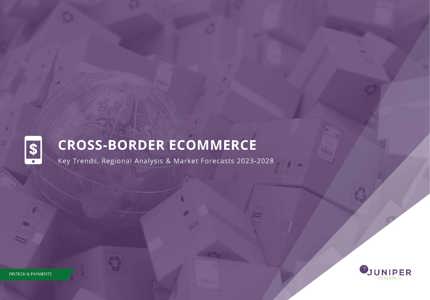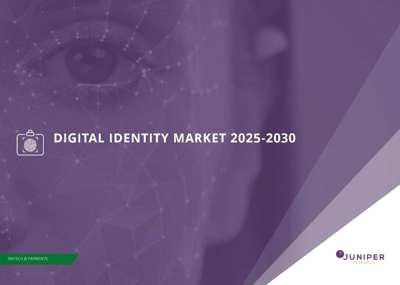How Is the Cross-border eCommerce Landscape Evolving?
The Role of Mobile Devices in Growing eCommerce in Developing Regions
Online marketplaces offer a way for shoppers to browse a wide range of items on a single site at competitive prices. They have been a major driver in the growth of cross-border eCommerce in recent years.
Marketplaces charge monthly costs as well as a commission on sales, which varies according to product category and/or volume of sales. In developing markets, online marketplaces are often mobile based, as mobile penetration is increasing rapidly and shoppers in these markets are less likely to own or use a desktop or laptop computer. In these markets, online marketplaces are seeing strong success and rapid growth as a result of broad product availability and competitive pricing.
What Regulatory Challenges Do eCommerce Merchants Need to Navigate?
Expanding digital sales channels to new countries and regions can create challenges for brands and merchants wishing to implement an effective cross-border eCommerce strategy in terms of effectively navigating the different regulatory requirements and laws in place in different countries. These can introduce uncertainty around issues such as taxes and tariffs, legal frameworks and limitations of sale. Some of the regulations around payments alone include:
- Data privacy – regulations with regard to the handling of customers’ personal data.
- Payment regulations – for example, PSD2 (the updated EU Payment Services Directive) and SCA (Strong Customer Authentication), which apply to online payments processed in the EEA (European Economic Area).
- PCI DSS (Payment Card Industry Data Security Standard) is a set of security standards that stipulate that all companies that accept, process, store or transmit credit card information maintain a secure environment.
- Card brand adoption deadlines.
- EMV Secure Remote Commerce Specifications.
- Being able to offer multi-currency pricing and local payment options.
With the growth of eCommerce and mobile penetration across the globe, digital BNPL offers are gaining ground versus other methods of payment, such as cash and credit cards. Better accessibility and frictionless customer experience are the two key drivers of BNPL growth, therefore, it is forecast to cannibalise more of the digital payments market share, as Internet usage and mobile penetration increase. It will thus play an important role in improving the cross-border shopping experience.
Our latest research found:
- The value of cross-border eCommerce will exceed $2.1 trillion in 2023, from $1.9 trillion in 2022.
- This growth of over 13% in a single year reflects the increasing success of marketplaces which offer goods across borders, as well as the rising viability of cross-border sales as an eCommerce model.
- As eCommerce models diversify, including models such as buy now pay later and click and collect, cross-border options must also keep pace, by agreeing local distribution and payment partnerships.
- The marketplace model, where large vendors sell goods to users on behalf of cross-border vendors, represents an easy way to access a large audience, while ensuring that accepting payments and other logistical issues are seamlessly handled.
- Physical goods will account for over 97% of cross-border eCommerce spend in 2023, with digital goods making up the remainder.
- It identified the maturity of cross‑border export of physical goods as a business model as a major factor in this difference, as well as increasingly cost‑conscious end users.
Latest research, whitepapers & press releases
-
 ReportDecember 2025
ReportDecember 2025AI Agents for Customer Experience Platforms Market: 2025-2030
Our comprehensive AI Agents for Customer Experience Platforms research suite comprises detailed assessment of a market that is set to disrupt mobile communications. It provides stakeholders with insight into the key opportunities within the AI agents for customer experience platforms market over the next two years.
VIEW -
 ReportDecember 2025Fintech & Payments
ReportDecember 2025Fintech & PaymentseCommerce Fraud Prevention Market: 2025-2030
Our eCommerce Fraud Prevention research suite provides a detailed and insightful analysis of this evolving market; enabling stakeholders from financial institutions, law enforcement agencies, regulatory bodies and technology vendors to understand future growth, key trends, and the competitive environment.
VIEW -
 ReportNovember 2025Telecoms & Connectivity
ReportNovember 2025Telecoms & ConnectivityeSIMs & iSIMs Market: 2025-2030
Juniper Research’s eSIMs and iSIMs research suite offers insightful analysis of a market set to experience significant growth in the next five years. The research suite provides mobile network operators (MNOs), original equipment manufacturers (OEMs), and eSIM management and platforms vendors with intelligence on how to capitalise on the market growth, and guidance on how eSIM-only devices and sensors, SGP.42, in-factory provisioning, and iSIMs will change the competitive landscape.
VIEW -
 ReportNovember 2025Fintech & Payments
ReportNovember 2025Fintech & PaymentsModern Card Issuing Platforms Market: 2025-2030
Our Modern Card Issuing Platforms Market research suite provides a detailed and insightful analysis of this evolving market; enabling stakeholders from banks, financial institutions, fintech companies, and technology vendors to understand future growth, key trends, and the competitive environment.
VIEW -
 ReportNovember 2025Fintech & Payments
ReportNovember 2025Fintech & PaymentsDigital Wallets Market: 2025-2030
Our digital wallets research suite provides detailed analysis of this rapidly changing market; allowing digital wallet providers to gain an understanding of key payment trends and challenges, potential growth opportunities, and the competitive environment.
VIEW -
 ReportOctober 2025Fintech & Payments
ReportOctober 2025Fintech & PaymentsDigital Identity Market: 2025-2030
Juniper Research’s Digital Identity research suite provides a comprehensive and insightful analysis of this market; enabling stakeholders, including digital identity platform providers, digital identity verification providers, government agencies, banks, and many others, to understand future growth, key trends, and the competitive environment.
VIEW
-
 WhitepaperDecember 2025Telecoms & Connectivity
WhitepaperDecember 2025Telecoms & ConnectivityHuman + AI: Drivers of Customer Experience AI Agents in 2026
Our complimentary whitepaper, Human + AI: Drivers of Customer Experience AI Agents in 2026, examines the key drivers of the AI agents for customer experience platforms market in 2025.
VIEW -
 WhitepaperDecember 2025Fintech & Payments
WhitepaperDecember 2025Fintech & PaymentsBeyond Chargebacks: The True Cost of Fraud for Digital Commerce
Our complimentary whitepaper, Beyond Chargebacks: The True Cost of Fraud for Digital Commerce, examines the state of the eCommerce fraud prevention market; considering the impact of evolving digital fraud strategies, including key trends such as identity theft, account takeovers, chargebacks, policy abuse and friendly fraud.
VIEW -
 WhitepaperNovember 2025Telecoms & Connectivity
WhitepaperNovember 2025Telecoms & ConnectivityeSIM-only Devices: The Impact on Operators, Consumers, and IoT
Our complimentary whitepaper, eSIM-only Devices: The Impact on Operators, Consumers, and IoT, explores the challenges and opportunities for the three segments, with a particular focus on eSIM-only smartphones and SGP.42.
VIEW -
 WhitepaperNovember 2025Fintech & Payments
WhitepaperNovember 2025Fintech & PaymentsUnlocking the Next Stage of Growth for Modern Card Issuing Platforms
This free whitepaper analyses key trends shaping the modern card issuing space, and the ways in which modern card issuing platforms can capture growth.
VIEW -
 WhitepaperNovember 2025Fintech & Payments
WhitepaperNovember 2025Fintech & PaymentsTop 10 Fintech & Payments Trends 2026
Fintech is evolving fast. From stablecoins to agentic AI, our annual guide reveals the shifts redefining payments, digital identity, and the future of money in 2026. Download your copy today.
VIEW -
 WhitepaperNovember 2025Fintech & Payments
WhitepaperNovember 2025Fintech & PaymentsDigital Wallets: Empowering Financial Inclusivity
Our complimentary whitepaper, Digital Wallets: Empowering Financial Inclusivity, examines the state of the digital wallets market; considering the impact of digital wallets on different geographies, how they are shaping the modern payments landscape through lower transaction fees and promoting financial inclusivity for underbanked populations, and how they are competing with established payment methods.
VIEW
-
IoT & Emerging Technology
Juniper Research Unveils Top 10 Emerging Tech Trends to Watch in 2026
January 2026 -
Fintech & Payments
Digital Identity App Usage to Hit 6.2 Billion by 2030, Driven by Shift to Decentralised Models
December 2025 -
Telecoms & Connectivity
Travel eSIM Margins Under Pressure as Revenue per Gigabyte Falls 10% Globally in Two Years
December 2025 -
Telecoms & Connectivity
AI Agents to Power 1,000% More Customer Interactions for Enterprises Globally by 2027
December 2025 -
IoT & Emerging Technology
Global D2C Revenue Set for $370 Million Surge, But Satellite Operators Should Not Chase Full MNO Status
December 2025 -
Fintech & Payments
Digital Goods Fraud to Cost eCommerce Merchants $27 Billion Globally by 2030 as AI Tools Accelerate Attacks
December 2025





















